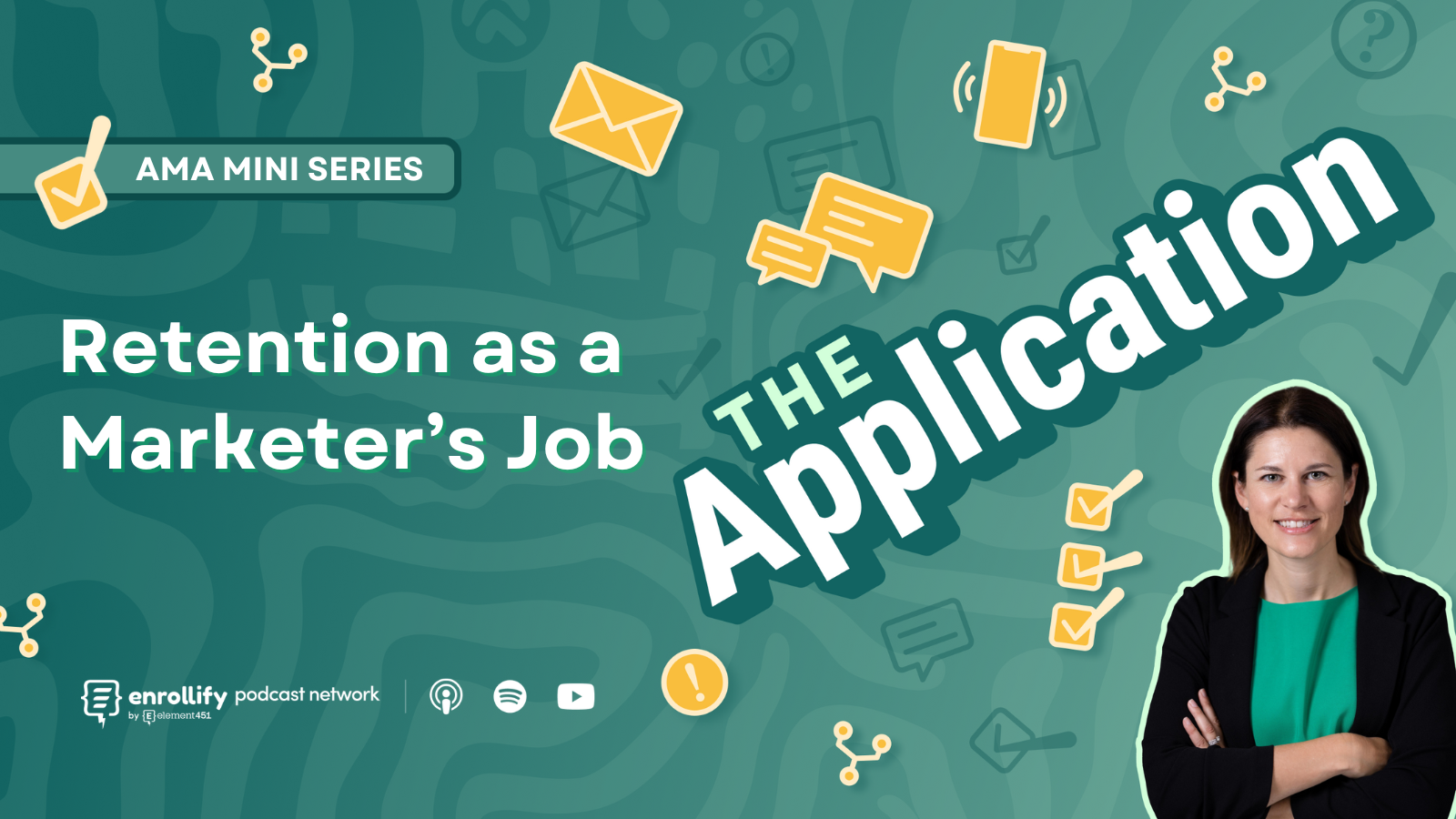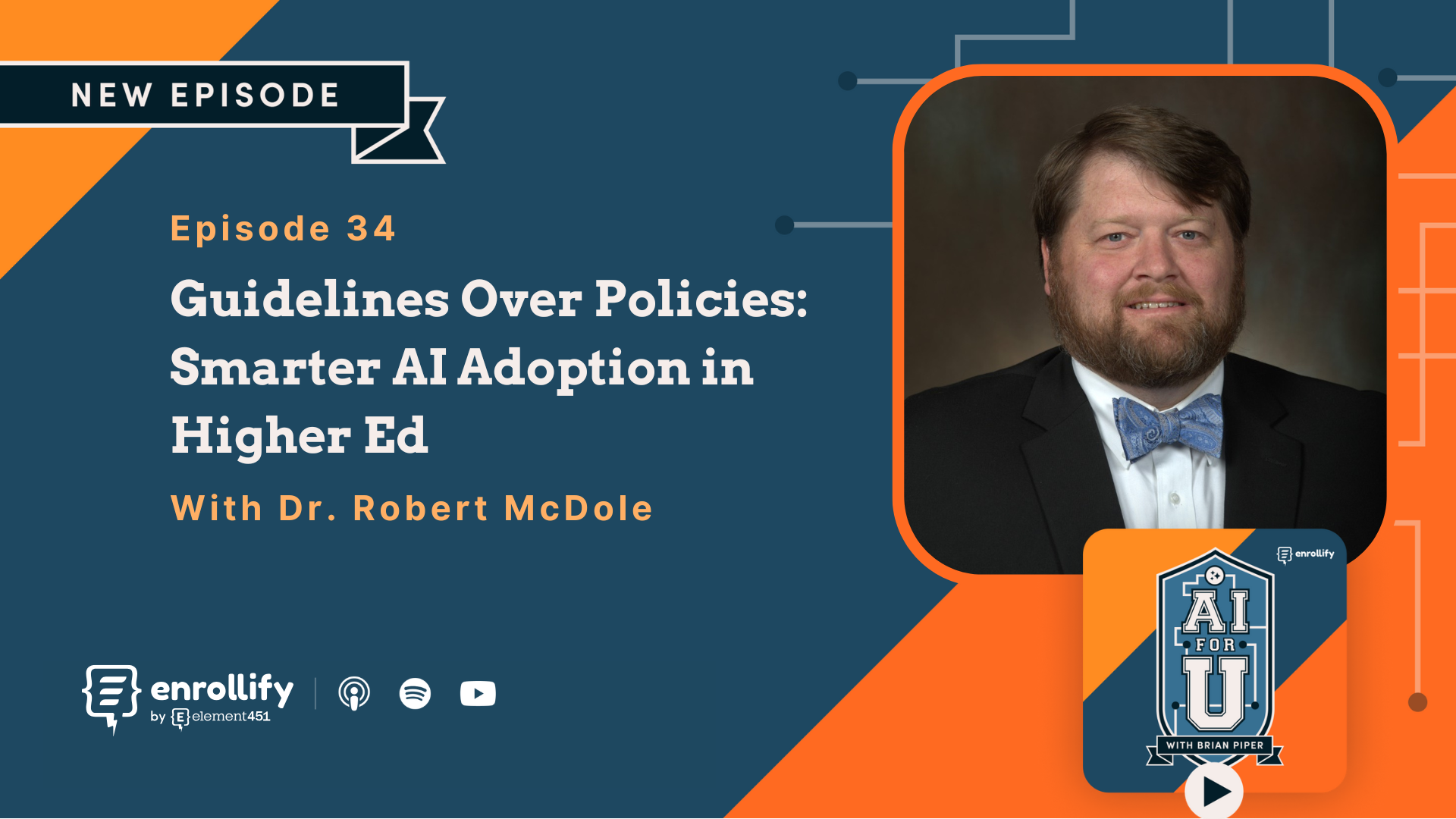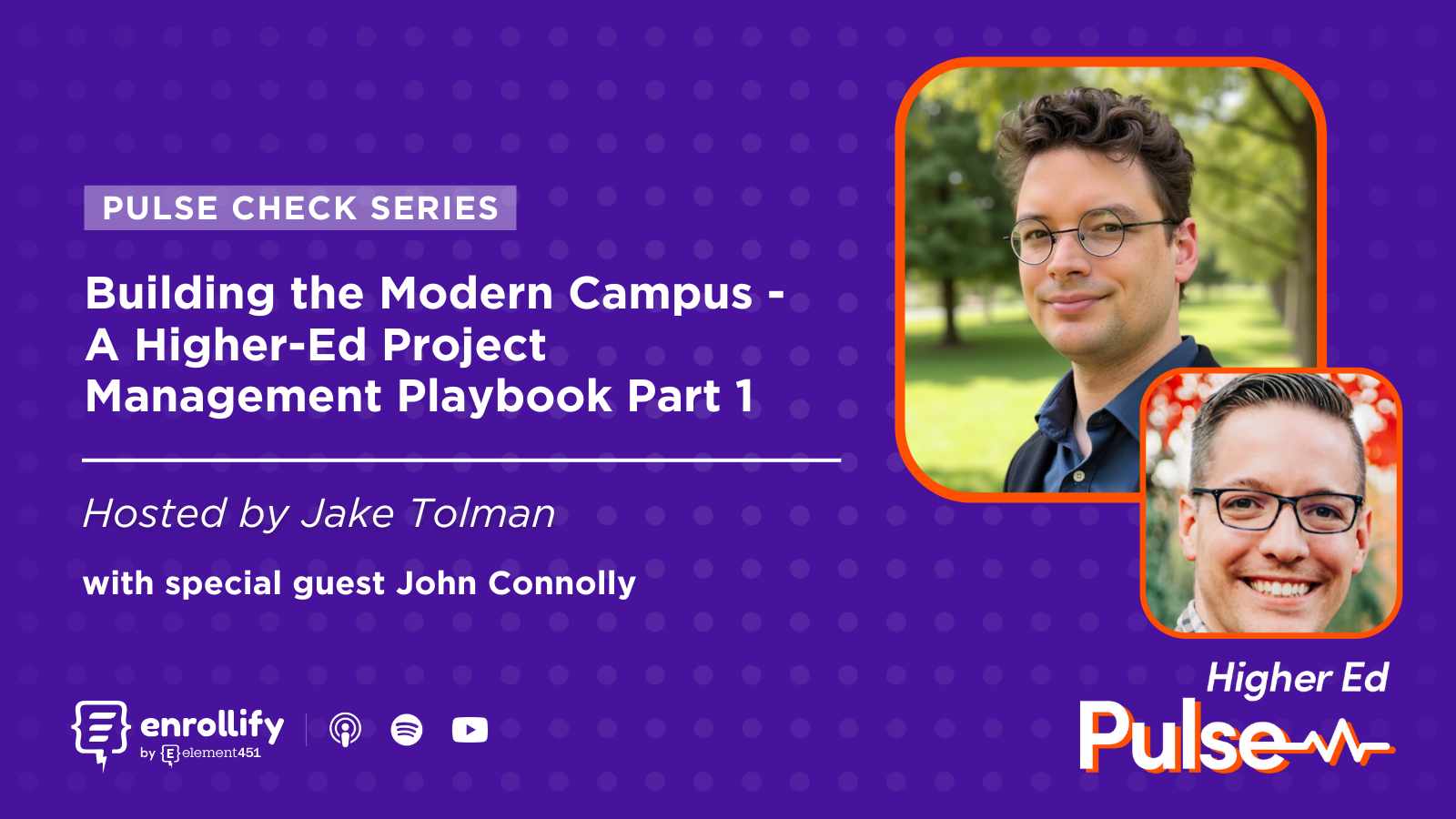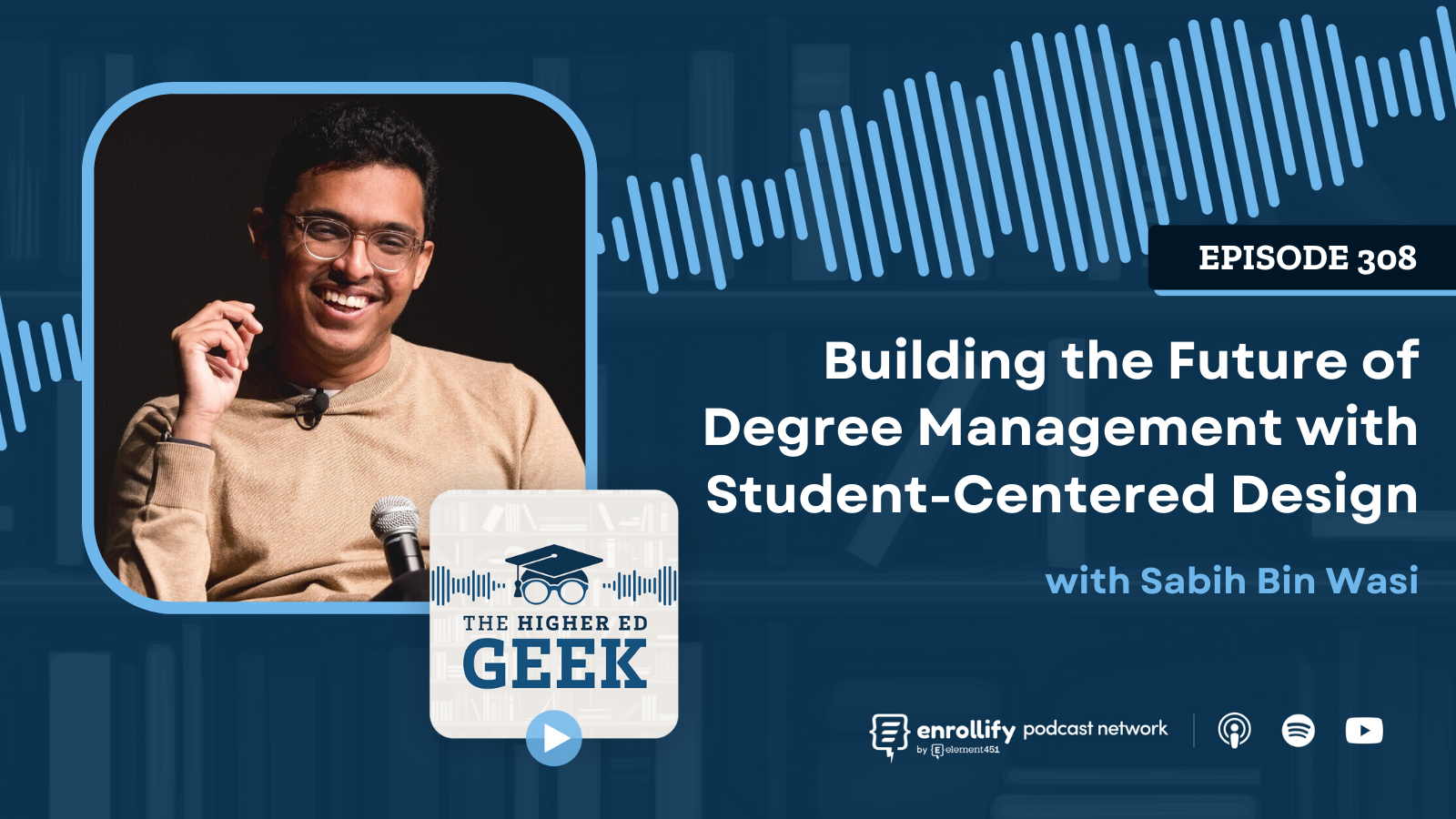About the Episode
Got a story to tell? An innovative idea to share? Fill out our guest nomination form and let's chat!
About the Episode:
Trump’s June 6 EO on Cybersecurity
Fact Sheet: President Donald J. Trump Reprioritizes Cybersecurity Efforts to Protect America
On this episode of Higher Ed Pulse, host Mallory Willsea is joined by Brad Carson—former University of Tulsa president, former U.S. Congressman, and now president of Americans for Responsible Innovation—to explore how colleges are being drafted into America’s AI future. They break down the implications of two recent executive orders that effectively position higher education as both workforce engines and cybersecurity sentinels in the AI era. This isn’t a drill—colleges are now critical infrastructure. So, what role should higher ed play in shaping AI’s trajectory? Let’s dive in.
Key Takeaways
- AI in higher education is no longer optional—two new executive orders have formalized higher ed’s role in national AI workforce development and cybersecurity strategy.
- Institutions are being asked to build AI-ready talent pipelines while also securing their digital networks like federal systems.
- Cybersecurity readiness is now a compliance imperative for colleges with sensitive student data and federal integrations.
- A renewed case is being made for the humanities—to help students and society grapple with ethical and philosophical AI implications.
- Faculty development and AI integration into pedagogy will be crucial; resistance to AI may render some programs irrelevant.
- Guardrails around AI development, especially in higher ed settings, are essential to ensure tech benefits human flourishing.
- Regulation and innovation are not mutually exclusive—they can coexist and even reinforce each other.
- Higher ed’s role isn’t just economic—it’s civic. Institutions must help society answer fundamental questions about what it means to be human in the AI era.
Episode Summary: Key Questions and Insights from the Conversation
What do the new executive orders mean for higher education?
In April and June, the U.S. government released two AI-focused executive orders. The first calls on colleges to expand AI, STEM, and cybersecurity programs to fuel workforce readiness. The second frames universities as critical digital infrastructure, mandating new cybersecurity standards and reporting obligations. Together, they underscore that higher ed is central to the U.S.'s AI ambitions—both as a talent engine and a security priority.
How should college leaders interpret these mandates?
Brad Carson urges leaders not to panic, but to pay close attention. While details are still forthcoming, these orders indicate a directional shift. Washington sees colleges as essential players in AI adoption and resilience. Institutions should proactively begin updating curricula, forming public-private partnerships, and assessing cyber vulnerabilities—even before official mandates become policy.
Is higher ed being empowered or enlisted?
It’s a fair concern. As Mallory points out, many campuses are still recovering from COVID-era disruptions and operating under tight budgets. Brad acknowledges the tension but believes the executive orders are more of a call to action than a crackdown. Universities have long played roles in workforce training and community development. The AI wave just expands that mission—and yes, it comes with new stakes.
How should faculty respond to AI adoption on campus?
Carson warns that banning ChatGPT in syllabi won’t stop its use. Instead, he advocates for integrating AI thoughtfully into pedagogy. Faculty must assume AI will touch every part of student work—from essays to problem sets—and reimagine teaching accordingly. That includes leveraging AI as a tutor or research assistant and focusing class time on analysis, discussion, and mentorship rather than content delivery alone.
What role do the humanities play in the AI conversation?
Despite all the buzz about STEM, Carson argues that the AI era actually strengthens the case for liberal arts. As society confronts big questions—What is truth? What is justice? What does it mean to be human?—we’ll need historians, philosophers, ethicists, and cultural critics more than ever. A well-rounded education that blends technical fluency with critical thinking is key to thriving in an AI-shaped world.
What is Americans for Responsible Innovation and why does it matter?
Brad Carson now leads this bipartisan nonprofit focused on ensuring AI technologies are developed safely and ethically. The organization pushes for smart, scalable regulations that support innovation without sacrificing public trust. From algorithmic bias to data privacy, they aim to make sure that AI tools promote—not undermine—human dignity and societal wellbeing.
Can regulation keep up with AI innovation?
Yes, says Carson. He points out that many industries have grown faster because of thoughtful regulation. Guardrails build public trust, create predictability, and encourage investment. When people feel protected, they’re more likely to adopt and engage with new technologies. The same can be true for AI—especially if colleges help lead the way in developing norms and frameworks.
What is higher ed’s long-term role in the AI era?
In a word: everything. Workforce training? Yes. Civic education? Absolutely. Ethical research, public engagement, cultural critique? All of the above. Carson believes higher ed will help shape how society defines—and defends—what it means to be human in a world increasingly run by machines. That’s not just an opportunity; it’s a responsibility.
Connect With Our Host:
Mallory Willsea
https://www.linkedin.com/in/mallorywillsea/
https://twitter.com/mallorywillsea
About The Enrollify Podcast Network: The Higher Ed Pulse is a part of the Enrollify Podcast Network. If you like this podcast, chances are you’ll like other Enrollify shows too!
Some of our favorites include Generation AI and Confessions of a Higher Education Social Media Manager.
Enrollify is produced by Element451 — the next-generation AI student engagement platform helping institutions create meaningful and personalized interactions with students. Learn more at element451.com.















